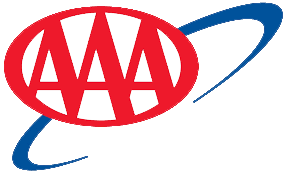How we engaged more employees in our product process in Aha!
Andrew Ardron
Managing Director
We had a problem
Over the last few years the product team worked hard to adopt DevOps processes. We built a continuous delivery system using Microsoft Visual Studio. And, while this includes a kanban board for managing sprints, it was soon “swamped” by user stories and features that we couldn’t organize or prioritize. We coded lots of updates, but without any real direction or plan. What’s more, the level of detail in Microsoft Visual Studio and its developer focus meant that the rest of the company couldn’t really see what was being developed -- in terms of timescale or what had been released. It was not in any sort of digestible format. If our own staff (sales, support, and marketing) could not see and understand what was going on, we had no hope of sharing this work with our customers.
Aha! as a solution
With Aha! our product team was able to start at the beginning. We first agreed upon company-wide software goals and objectives. Then, set initiatives with timescales. After that, the development team and product manager were able to figure out what features went where and which ones to prioritize. We didn’t have to discard the rest -- we were able to organize those into a number of “parking lots” for future consideration.
Aha! allows us to increase the input of ideas while at the same time ensuring we can see the “wood for the trees.” We can be responsive to customer feedback while staying focused on our strategy and long-term goals.
Using the Aha! integration with Microsoft Visual Studio, we can simply push a release into Visual Studio so that the developers can code and manage the actual development process in finer detail on their kanban board and code repositories.
The reporting capabilities and beautiful visualizations in Aha! -- along with the ability to publish read-only notebooks -- allow the DevOps team to share plans with the rest of the company at a high level.
Life is good
We recently expanded our Aha! usage and engaged more staff in the development process, allowing them to comment on features and add or complete tasks against features and plans.
We have even use the Aha! API, along with web-hooks in Microsoft Visual Studio, to provide additional feedback from Visual Studio to Aha! -- now the comments in Aha! show even more information on the progress of a feature through development and testing.
Using Aha! notebooks, we have been able to share a more limited view of features with customers. We added custom fields in Aha! (really easy to set up) and we have even begun marking features as “public,” “private,” or “in preview.” This enables us to keep some things internal and in other cases tell customers that we have released a feature but, for now, only available in preview.
The communication improvement since we started using Aha! has been astonishing!
The sales, support and marketing teams get way more information while creating way less interruptions. Instead of being in the dark until they desperately need to know something (and then interrupting the developers), they can access the information they need, whenever they need it.
Beyond that, bringing the story full circle, the customers can now contribute to the future releases using the ideas portal. The ideas portal not only gives us invaluable feedback, it helps the customers to feel that they “own” a little bit of the product and know that we are listening.
Start roadmapping now — get 30 days of Aha! free

Experian gained visibility across their entire portfolio, better visualizing and planning what needed to be done.
Learn more

LinkedIn achieved complete product visibility, solving a problematic product feedback loop.
Learn more

AAA created a sustainable, transformative customer experience by using Aha! to align around initiatives.
Learn more